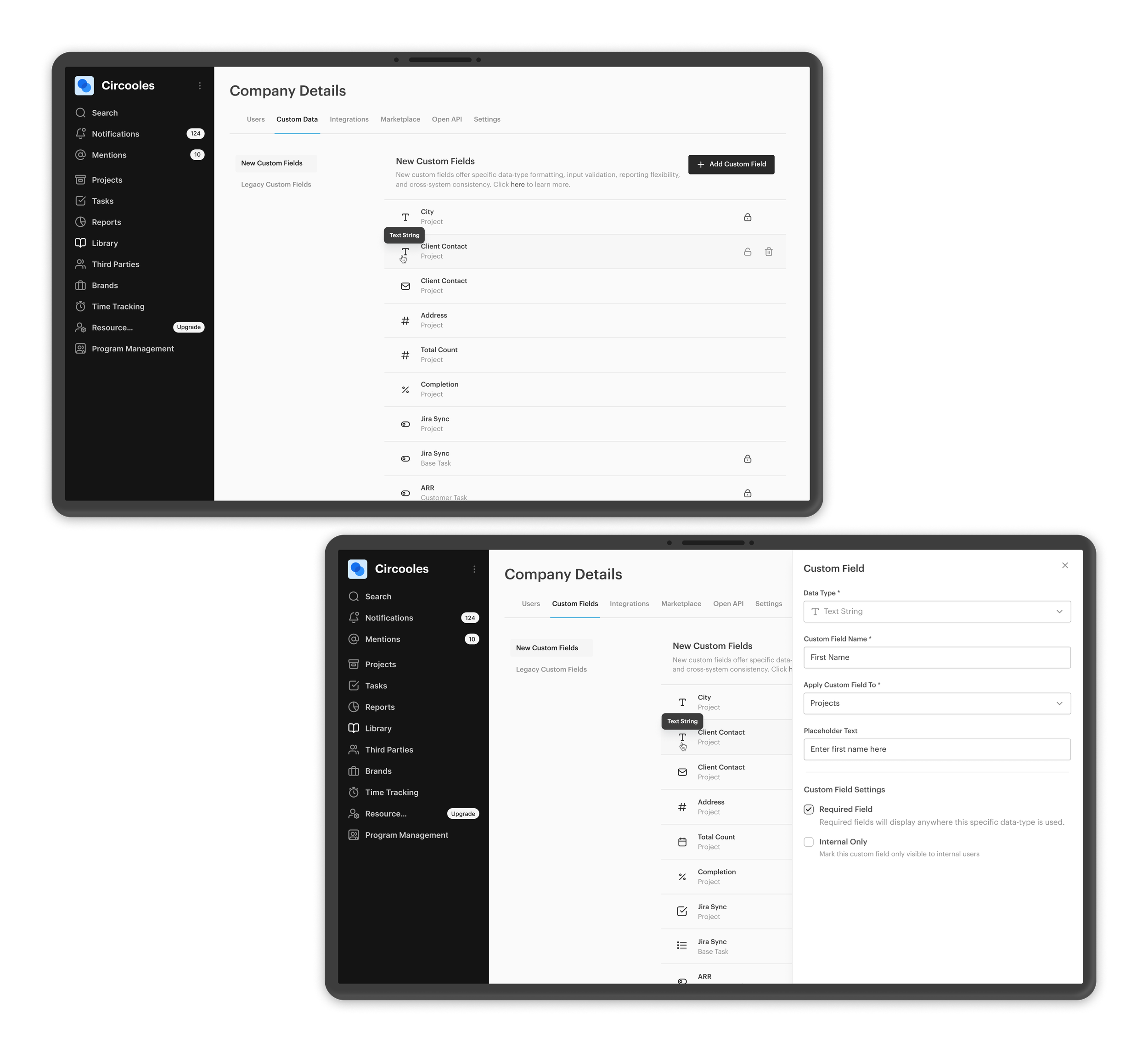Enhanced Custom Fields - GUIDEcx
GUIDEcx is an onboarding and implementation SaaS company. Onboarding across different industries requires flexibility and customization for every unique experience. Customers needed a better way to track and enter custom data to improve accuracy and enhance project reporting.
The Problem
Having essential data limited to a text string creates inconsistencies and errors.
My Role - Designer for Integrations Team
UX Research, Establishing User Flows, Wireframes, Identification and prioritization of data types, Redesign of current custom fields page, Collaboration with PM and Tech Lead, Customer calls to validate general direction.
Pain Points and Context
Customers couldn’t run their reports on custom fields, so GUIDEcx’s internal team spent an average of 2-3 hours each week across a dozen or more customers building, maintaining, and updating custom reports.
Because of the data cleanliness issues, GUIDEcx also had to use internal resources to ensure customers could access the custom field data they would need across projects. 50% of GUIDEcx customers were using custom fields to integrate our product with external systems to report on data outside our platform.
Current formatting and lack of validation limited our ability to bring the most value to our customers. We knew Dynamic custom fields would enable our integrations team to pull multiple sources of data from external systems (like Hubspot, Salesforce, and Jira) and allow us to offer enhanced reporting, dependency logic, and even task triggering within projects.
Project Goal
Improve the creation and customization of eight new Custom Field data types.
Prioritize Data Types
We determined eight new data types to implement with enhanced formatting and validation.
Text String
Boolean
Whole Numbers
Decimal
Percentage
Date
Single-select dropdown
Multi-select dropdown
Through exploration, I determined that Custom Fields should continue to be managed globally so Admins could create and manage them across all projects and tasks for their organization.
When planning new user flows for creating custom fields, I also opted for a progressive disclosure experience to simplify the information being displayed to help avoid confusion during the creation process.
Redesign of Custom Fields Table
Updating the UI within the application was a design priority, so I leveraged our design system and applied some existing patterns within the product to quickly enhance and redesign the experience.
I chose to represent data types with an icon for easy recognition, and I also implemented a tooltip that would display the data type on hover. While validating these changes and ideas with customers, I found they felt the redesign was refreshing and intuitive.

